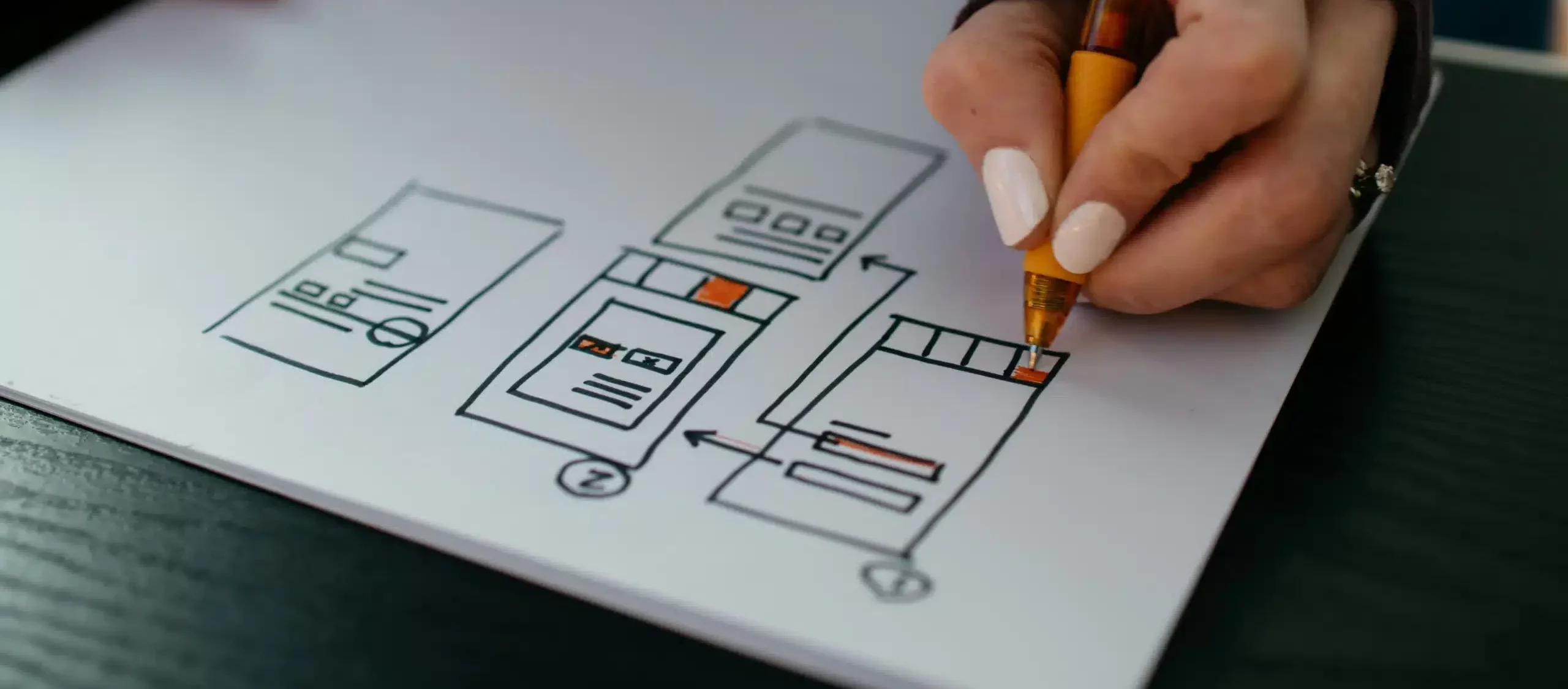The importance of good User Experience

Have you ever downloaded a mobile app or been on a website that looks amazing but turns out to be a frustrating experience? This happens all too often when an app or website is built with only aesthetics in mind and no consideration is given to the user’s experience or journey. When designing any product or service, the design must be user-focused from the outset, because if it doesn’t offer a great experience then there will most certainly be an alternative option out there that does.
What exactly is UX?
UX stands for “User Experience”, and essentially describes how a user feels when they engage with a product or service. Good UX is easy to navigate, enjoyable to use and looks appealing. Bad UX may still look good but is complicated, confusing and frustrating to use. UX design is the process of creating experiences and journeys to meet user’s needs and solve their problems. By firstly identifying and understanding specific user problems and needs, digital products and services are designed in a user-centric way to meet the needs and solve the problems.
What are the principles of UX?
From websites and mobile apps to software interfaces, prioritising UX is essential for creating engaging, intuitive, and successful products. Here are the core principles that underpin the importance of UX:
- User-Centred Design: At the heart of UX lies the principle of user-centred design. By placing users at the forefront of the design process, you will gain valuable insights into user needs, behaviours, and preferences. This understanding allows for the creation of products that resonate with users.
- Usability: A user-friendly interface is paramount to the success of any digital product. Usability focuses on making products easy to use and are intuitive, ensuring that users can accomplish tasks efficiently without encountering unnecessary hurdles.
- Accessibility: Accessibility is about ensuring that products are usable by individuals of all abilities. By incorporating inclusive design practices, your product can cater to diverse user needs, including those with disabilities, and provide equal access to information and functionality.
- Consistency: Consistency in design elements fosters familiarity and predictability for users. Maintaining consistent layouts, terminology, and interactions across the product will enhance usability.
- Clarity and Simplicity: Clear communication and intuitive navigation are features of a well-designed UX. Simplifying complex processes and presenting information in a straightforward manner enables users to understand the product easily.
- Feedback and Responsiveness: Providing timely feedback to user actions is crucial for creating a responsive and engaging experience. Whether through visual cues or informative messages, feedback ensures that users feel in control and informed throughout their interaction with the product.
- Flexibility and Efficiency: Designing for flexibility and efficiency allows products to adapt to diverse user preferences and workflows. By offering customisation options and streamlined interactions, your product can empower users to tailor their experience to suit their needs.
- Visual Hierarchy: Visual hierarchy plays a key role in guiding user attention and prioritising information. By strategically organising visual elements using techniques such as contrast, size, and colour, you can create a clear hierarchy of importance, making it easier for users to navigate and comprehend content.
What is the danger of ignoring UX?
Embracing the core principles of UX is essential for creating products that not only meet user needs but also deliver delightful and meaningful experiences. By ignoring UX, you have no way to ensure your digital product resonates with or engages your users. It doesn’t matter how pretty a service looks, if it is simply a case of form over function then it will not succeed in today’s competitive digital landscape.
When executed effectively, UX design has the potential to enhance product quality, increasing the likelihood of market success. By failing to design with the user in mind as a key part of the product development process, opportunities are also missed for the business in terms of boosting return on investment and mitigating risks.
Conclusion
In conclusion, prioritising good UX design is crucial. This goes beyond aesthetics, focusing on creating enjoyable, intuitive experiences for users. By understanding and implementing the core principles of UX, you can not only meet user needs but also drive success in a competitive market. Remember, a well-crafted UX design strategy not only enhances the end-user experience but also contributes to increased profitability and reduced risk of users removing your app and using that of a competitor.